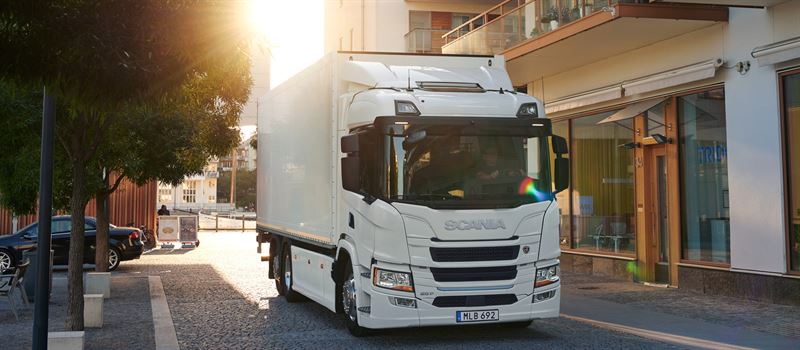Scania publishes life cycle assessment of battery electric vehicles

As the first player in the heavy commercial vehicle industry, Scania publishes a life cycle assessment (LCA) of distribution vehicles. The LCA concludes that the environmental impact of battery electric vehicles is significantly lower than that of a vehicle with an internal combustion engine.
Life Cycle Assessment is an ISO 14040/44 method to calculate the environmental impacts of products, covering the entire life cycle from cradle to grave, starting at the extracting and refining of raw materials and ending at the recovery of, in this case, the vehicles.
“As the heavy commercial vehicle industry converts into a higher share of battery electric vehicles, we have to ask ourselves, are the battery electric vehicles truly good for the environment when we look over the full life cycle? The impact generated is not from the tailpipe emissions, so the industry needs to rethink what we mean by environmental impact. With this study, we have the clear answers” says Andreas Follér, Head of Sustainability at Scania.
The production of the battery electric vehicle entails a higher environmental impact, mainly due to energy intensive battery cell manufacturing. Despite the increased production burden, the total life cycle impact on climate change is dramatically better for the battery electric vehicles, thanks to the much lower carbon impact from the use phase.
For trucks operating in EU, we reduce life cycle carbon emissions by 38% (EU mix 2016) to 63% (prognosed EU mix 2030). If we switch to green electricity, we reach a carbon emission reduction over the life cycle of 86%. The battery electric vehicle has the potential to have less climate impact than the one with an internal combustion engine already within one or two years of operation. This covers all investigated electricity mixes in the report.
The battery cells stands for a bit over 40% of the carbon emissions coming from production of battery electric vehicles. There is however a big potential for improved emission levels from the production of battery electric vehicles as the battery industry continuously decarbonises and the use of green electricity continuously increases.
“We expect that the total cost of operation for the majority of our customers will be positive for battery electric vehicles during this decade and half our volumes might well have an electric driveline by 2030. The race towards zero emissions will be about decarbonising the processes and materials needed to assemble the future truck and buses,” says Follér.
Partnerships are key to delivering on the carbon reductions needed to achieve the Science Based Targets Scania has committed to. For example, the partnership with Northvolt which aims to produce the world’s greenest battery. Steel is another big part of the sourcing carbon footprint of trucks, due to the heavy fossil dependency in the production phase. The partnership with H2 Green Steel aims at solving that and sets Scania on a trajectory for a Zero Emission Truck, which the company aims to deliver on in 2030.
About Scania’s Life Cycle Assessment:
Life Cycle Assessment is an ISO 14040/44 method to calculate the environmental impacts of products or services over their entire life cycle: in this case the vehicle and battery production, use, maintenance and recovery.
LCA in Scania is used to evaluate the product’s environmental impacts and setting internal project targets in product development.
The functional unit used in this study is: 500,000 km driven in a representative distribution cycle with an average payload of 6.1 ton and is chosen with the aim to reflect and represent a full life of operation for the vehicles.
For further information, please contact:
Karin Hallstan, Head of Corporate Communication, Scania
Phone: +46 76 842 81 04
E-mail: karin.hallstan@scania.com
Andreas Follér, Head of Sustainability, Scania
E-mail: andreas.foller@scania.com
Scania is a world-leading provider of transport solutions. Together with our partners and customers we are driving the shift towards a sustainable transport system. In 2020, we delivered 66,900 trucks, 5,200 buses as well as 11,000 industrial and marine power systems to our customers. Net sales totalled to over SEK 125 billion, of which over 20 percent were services-related. Founded in 1891, Scania now operates in more than 100 countries and employs some 50,000 people. Research and development are mainly concentrated in Sweden. Production takes place in Europe and Latin America with regional product centres in Africa, Asia and Eurasia. Scania is part of TRATON GROUP. For more information visit: www.scania.com.


